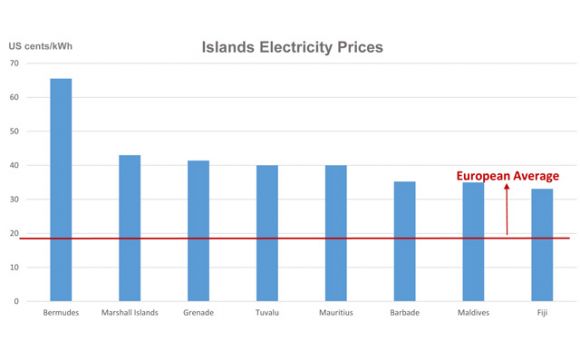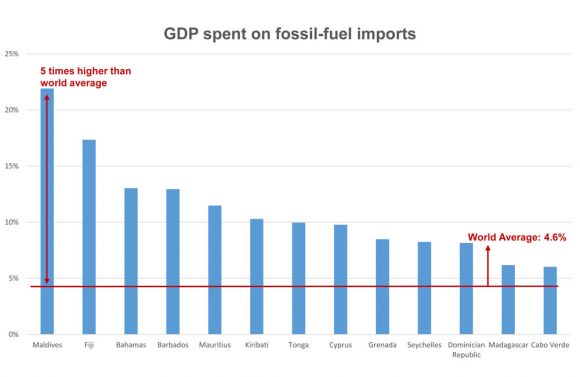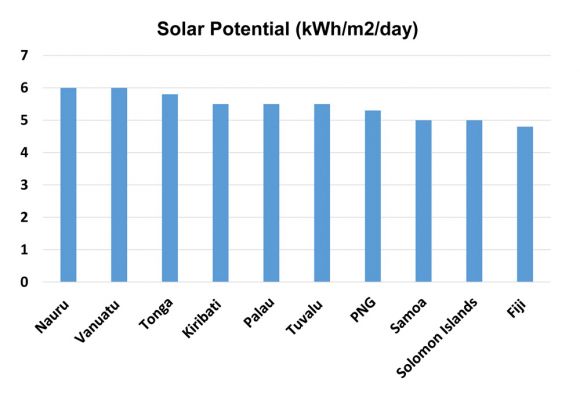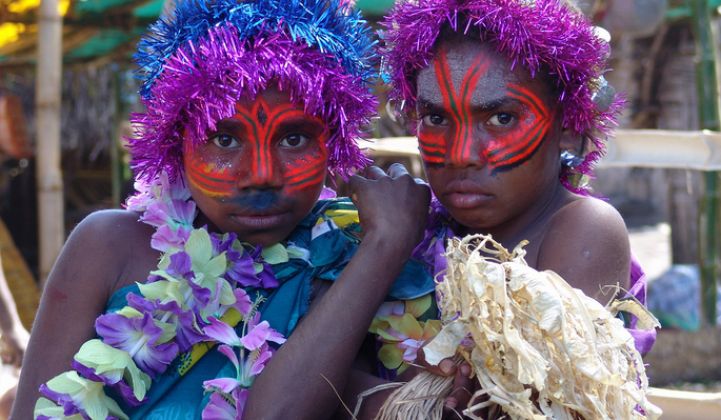It’s no secret that most islands pay a high price for electricity. From Bermuda to Fiji, the cost of electricity would shock even Europeans.

Source: IRENA
But for most island economies, it’s not as simple as just swapping imported fossil fuels for renewable generation, even if the high-level economics seem promising.
The challenge of bringing the right type of electrification to islands where people live in energy poverty, like Vanuatu, is different from increasing renewable penetration on islands where there is already a functioning grid, like Bermuda. In both cases, however, a critical challenge is addressing local market needs and entrenched subsides and markets for fossil fuels.

Source: IRENA
The International Renewable Energy Agency (IRENA) is trying to mobilize $500 million in capital to install 100 megawatts of solar and 20 megawatts of other renewables on islands across the globe. Most importantly, it’s investing in capacity-building activities to bring technical and financial expertise to islands to make cleaner energy a reality.
IRENA is working at many points on the spectrum, from solar panels and solar hot water heating for resorts in the Caribbean to rural electrification in the Pacific.
On remote Pacific islands, many of which have strong solar potential, the focus is on training entrepreneurs and partnering them with local financial institutions, according to a presentation by Yao Zhao, an associate with IRENA’s Initiative for Promoting the Enabling Environment for Renewable Energy Deployment in Small Island Developing States.

Source: IRENA
In rural Vanuatu, solar lighting was the first application. Instead of paying for kerosene, villagers pay about $1.50 to $3 per week over three years for lights that are powered by solar panels and can be recharged at central charging stations run by a local entrepreneur. The project requires zero subsidies and was funded with $40,000 from private investors through Village Infrastructure Angels.
More than 20 people have been trained, and the organization is now offering more than just lights. Solar panels are also used to power machines that can grate cassava, a labor-intensive task that many women spend hours a week performing. A 400-watt solar-powered food mill with various attachments is used to grate and chop various staples, such as cassava, or to make snacks like banana chips and shredded coconut to sell at markets.
IRENA is now focusing on similar communities across the Pacific, with roadmaps in place for renewable energy capacity-building on 15 islands.



